Persistent shoulder pain can be frustrating, especially when efforts to alleviate it seem to yield little improvement. Sometimes thousands of dollars spent on treatment which doesn’t help, it just feels like you’re funding the practitioner’s next holiday…
If you’ve tried shoulder rehab and it’s not working, then we may need to expand your mind on what’s possibly linked rather than sticking to something that isn’t working.
Let’s explore three often-overlooked factors that may be hindering your shoulder recovery journey. It could be that your grip is weak, you’ve had/have chronic neck issues, or your lever lengths make your elbow the primary lever… and although these particular findings might not be a ‘hole-in-one’ per se, they might pose as contributors to your shoulder problem… Let’s unpack these…
Want some help? Reach out by putting in your details
1. Weak Grip Strength:
Weak grip strength has been shown to be linked to rotator cuff pathologies. In a recent 2022 paper by Turabi et al, found positive correlations between hand grip strength and rotator cuff activity… The stronger the grip, the stronger the rotator cuff (click here to read more)… and with general averages showing that the average male produces 54-64kgs and the average female produces 34-44kgs of force (click here to read more) it might be worth checking to see if yours is up to scratch.
2. Chronic Neck Issues:
Reflexive stabilisation is something that starts at the spine and moves outward. This refers to the body’s ability to react to forces without you needing to consciously control the reaction… This is how the rotator cuff mostly works. So if you find your shoulder hurting you with innocuous movements, or at times where you’re lifting very low loads, it’s possible that the neck is involved as it is the centrepiece that underpins the efficiency of your reflexive stabilisation.
3.Upper Limb Lever Imbalances:
Leonardo Da Vinci was the first person to show us that the forearm should be five-seventh’s of the length of our humerus (upper arm bone). However, it’s been a few hundred years since then. Today we see much longer forearms, probably to adapt to the changing societal and lieftyle needs. Put simply, the longest lever carries the largest load… Meaning - if you forearm is longer than your upper arm, then the pivot point carrying the largest load will be the elbow rather than the shoulder. So often, we see people being given shoulder exercises but neglecting the tricep and bicep. If the forearm is long, we can’t ignore these two muscles when it comes to solving shoulder pain.
Conclusion:
Of course, these are 3 factors that you may not have considered on your recovery journey. By no means are we saying that these will solve the problem, but if you’re stuck, they’re certainly worth looking at. If you’re not sure, we can help you.


